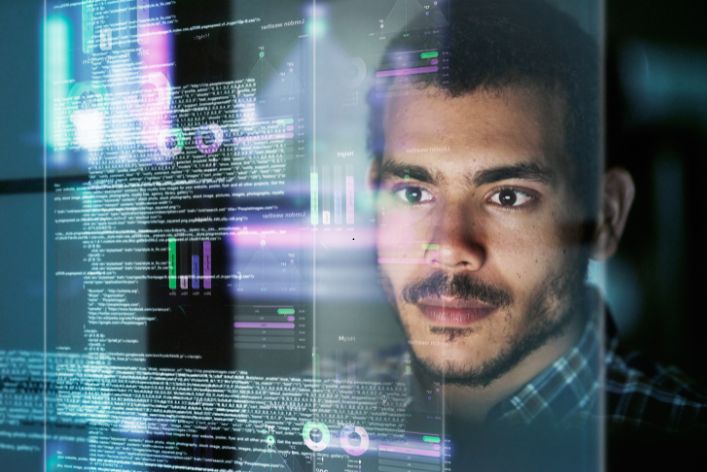Machine learning has revolutionized many industries by allowing computers to make accurate predictions based on data.
Supervised learning is a common technique among the different types of machine learning.
In this blog post, we will discuss what supervised learning means in machine learning, how it works, the types of algorithms used in supervised learning, and the best practices for supervised learning.
What is Supervised Learning?
Supervised learning is a type of machine learning where an algorithm learns to map inputs to outputs based on a labelled dataset.
A labelled dataset means that the correct output value or target variable accompanies the data.
Supervised learning aims to find the mapping function that can predict the correct output for any input data.
The model adjusts its weights as it receives input data.
This fitting process occurs during cross-validation.
Supervised learning assists companies in finding scaleable solutions to various real-world issues, such as classifying spam in a different folder from your inbox.
There are four basic components of supervised learning: input data, output data, model, and algorithm.
- Input data: It serves as the input to the algorithm.
- Output data: This is the correct output value or target variable that corresponds to the input data.
- Model: The model is the mathematical representation of the mapping function.
- Algorithm: The algorithm trains the model.
Read: Labelled Data vs Unlabelled Data in Machine Learning

Types of Supervised Learning
1. Regression
You use regression to understand the connection between dependent and independent variables.
It is also a kind of supervised learning that gains knowledge from labelled data sets to predict continuous results for various algorithm inputs.
Apply it when the output must be a finite number, like height or weight.
Regression has two types, and they are as follows:
Innovative Tech Solutions, Tailored for You
Our leading tech firm crafts custom software, web & mobile apps, designed with your unique needs in mind. Elevate your business with cutting-edge solutions no one else can offer.
Start Now- Linear regression: Linear regression connects two variables to predict future outcomes. The amount of independent and dependent variables is another factor that divides linear regression. Simple linear regression uses one independent and one dependent variable. Use multiple linear regression when there are two or more independent and dependent variables.
- Logistic regression: Apply logistic regression when the dependent variable is categorical or binary, like “yes” or “no.” Logistic regression also predicts discrete values for binary classification problems.
2. Classification
It entails classifying the material into groups.
You can use classification to determine whether or not an individual would be a loan defaulter if you were considering extending credit to them.
Binary classification is the process by which the supervised learning algorithm divides the incoming data into two different classes.
Classify data into more than two groups using multiple classification.
3. Naive Bayesian Model
The Bayesian paradigm helps to classify large finite datasets.
It is a process for allocating class labels that makes use of a direct acyclic network.
There is one parent node and many child nodes in the network.
Each child node exists independently of its parent.
It works well with very small data sets because the supervised learning model in ML makes building classifiers straightforward.
This approach is based on widespread data presumptions, such as the independent nature of each attribute.
However, this algorithm’s simplicity allows it to solve complex problems easily.
Read: What Does Unsupervised Learning Mean in Machine Learning?
How Supervised Learning Works
Data collection and preprocessing
The first step in supervised learning is to collect and preprocess the data.
Then, preprocess the collected data to prepare it for machine learning algorithms.
- Data sources: Collect data from various sources, such as databases, APIs, or sensors.
- Data cleaning: Clean the data to remove errors, missing values, or outliers.
- Data transformation: Transform the data to make it suitable for the machine learning algorithm. For example, converting categorical data to numerical data or normalizing the data to a specific range.
Model training
After preprocessing, split the data into training and testing sets.
Use the training data to train the model and the testing data to evaluate its performance.
- Splitting the data: Split the data into training and testing sets.
- Choosing an algorithm: The algorithm used for training the model depends on the problem at hand and the type of data.
- Tuning hyperparameters: Tune the algorithm’s hyperparameters to achieve the best model performance.
- Training the model: Use the algorithm to train the model on the training data.
Model evaluation
Once trained, evaluate the model on the testing data to assess its generalization to new data.
- Testing the model: Test the model on the testing data to evaluate its performance.
- Measuring accuracy: Measure the model’s accuracy by comparing predicted output with actual output.
- Confusion matrix: Use the confusion matrix to evaluate the model’s performance, showing correct and incorrect predictions.
Read: The Role of Machine Learning in Predictive Analysis
Advantages and Disadvantages of Supervised Learning
Supervised learning is one of the most common types of machine learning, and it has both advantages and disadvantages.
Here are some of the key advantages and disadvantages of supervised learning:
Advantages
- Predictive Accuracy: One of the biggest advantages of supervised learning is its ability to make accurate predictions. By training a model on labelled data, the model can learn patterns in the data and use those patterns to make predictions on new, unseen data.
- Transparency: Supervised learning models are often easier to understand and interpret than other machine learning models. Because the model is trained on labelled data, it is possible to see which features are most important for making predictions and how those features are weighted.
- Versatility: Supervised learning can be applied to a wide range of problems, from image recognition to natural language processing to time series analysis. As long as there is labelled data available, supervised learning can be used to make predictions in many different domains.
- Efficiency: Once a supervised learning model is trained, it can make predictions very quickly. This makes it useful for real-time applications where predictions need to be made quickly.
Disadvantages
- Labelled Data Requirement: One of the biggest disadvantages of supervised learning is the need for labelled data. This means that someone has to manually label the data, which can be time-consuming and expensive. In some cases, it may not be possible to obtain labelled data at all.
- Overfitting: Supervised learning models can be prone to overfitting, which means that the model becomes too complex and begins to memorize the training data instead of learning the underlying patterns. This can lead to poor performance on new, unseen data.
- Lack of Robustness: Supervised learning models can be sensitive to changes in the input data. If the data distribution changes, the model may need to be retrained or fine-tuned to perform well on the new data.
- Generalization: While supervised learning models can be very good at predicting new data that is similar to the training data, they may not be able to generalize well to new data that is significantly different from the training data. This can be a problem if the model is deployed in a new environment or if the data distribution changes over time.
Read: Machine Learning vs Artificial Intelligence

Best Practices for Supervised Learning
- Collect enough data: To train a model that generalizes well to new data, you need to collect enough data to cover all possible scenarios.
- Preprocess the data: The quality of the data has a significant impact on the performance of the model. Preprocessing the data by cleaning, transforming, and normalizing it is essential for building an accurate model.
- Choose the right algorithm: The choice of the algorithm depends on the problem at hand and the type of data. It is essential to choose the right algorithm to get the best performance from the model.
- Evaluate the model: Evaluating the performance of the model on testing data is crucial for assessing its accuracy and generalization ability.
- Tune hyperparameters: The hyperparameters of the algorithm need to be tuned to get the best performance from the model.
- Avoid overfitting: Overfitting occurs when the model is too complex and fits the training data too closely, resulting in poor generalization to new data. Regularization techniques such as L1 and L2 regularization can help prevent overfitting.
- Consider ensemble methods: Ensemble methods such as bagging, boosting, and stacking can be used to improve the accuracy and robustness of the model.
Conclusion
Supervised learning is a popular machine learning technique used for prediction and classification tasks.
It involves training a model on labelled data to learn the mapping function between input and output data.
By following best practices for supervised learning, you can build models that make accurate predictions and drive business value.
Seamless API Connectivity for Next-Level Integration
Unlock limitless possibilities by connecting your systems with a custom API built to perform flawlessly. Stand apart with our solutions that others simply can’t offer.
Get StartedBefore you go…
Hey, thank you for reading this blog to the end. I hope it was helpful. Let me tell you a little bit about Nicholas Idoko Technologies.
We help businesses and companies build an online presence by developing web, mobile, desktop, and blockchain applications.
We also help aspiring software developers and programmers learn the skills they need to have a successful career.
Take your first step to becoming a programming boss by joining our Learn To Code academy today!
Be sure to contact us if you need more information or have any questions! We are readily available.











